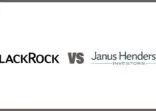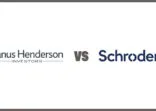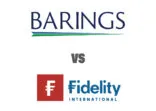These developments followed October’s news about an unexpected expansion in the stimulus programme and the Government Pension Investment Fund’s intention to increase its asset allocation targets favoring local equities, which then pushed up the indices to a seven-year high.
Fund managers see even more upside through expected corporate earnings strength.
With this as the backdrop, we take a look at two strategies from Fidelity Funds and BNP Paribas Investment Partners that scout for opportunities in the Japanese small- and mid-cap segment.
Both the Fidelity Japan Smaller Companies Fund and Parvest Equity Japan Small Cap are SICAV vehicles domiciled in Luxembourg. While the Fidelity fund has a longer track record, the Parvest fund has a more assets under management.
The Fidelity fund, which was launched in 1991, has JPY22,254m ($189.6m) in AUM compared with the Parvest fund that was incepted in 1996 and manages JPY55,424m ($472.3m) worth of assets.
Luke Ng, vice president at FE, shared his insights on the comparative analysis of the funds.
Investment strategy review
Overall, both funds tilt toward growth companies, but the average market cap of the Fidelity fund is larger than that of the Parvest fund, noted Ng.
The Fidelity fund uses Russell/Nomura Mid Small Cap Index as its performance benchmark index, which Ng said has a stronger focus on Japanese mid-cap stocks.
On the other hand, the benchmark for Parvest is the Russell/Nomura Small Cap Index, and the majority of its holdings are small-cap stocks with growth potential.
“There are also some large cap holdings in Fidelity. Parvest tends to invest into companies that are in an earlier stage of a business cycle.”
Jun Tano, portfolio manager of the Fidelity fund, favors companies with strong competitive advantages in their respective segment.
“He [Tano] pays attention to fundamental research and makes company visits to identify stocks with long-term grow potential.”
Shunsuke Matsushima, manager for the Parvest fund intends to invest in small companies in the innovative industries that are yet to be spotted by the market, and hence they tend to be under-researched and undervalued.
“Both funds usually hold a diversified portfolio of 100 or more stocks, but Fidelity has a higher concentration in the top 10 holdings relative to Parvest.”
As of 31 October, the Fidelity fund had 152 holdings in its portfolio with the top 10 accounting for 24% of the fund’s assets. The number of holdings in the Parvest fund were 125 and its top 10 stock picks accounted for nearly 16% of its assets.
Since the two funds focus on stocks with different market capitalisations, the top 10 holdings of both are completely different, Ng noted.
The Fidelity fund is overweight on all of its top five holdings, which are Nidec Corp, Otsuka Corp, Daikin Industries, Sumitomo Electric Industries and THK Company.
The top five holdings of the Parvest fund are Sun Corp, Teikoku Piston Ring, Hazama Corp, Mitsuba and Piolax, but the manager is underweight on all of the top five stock picks.
The Fidelity fund has overweight positions in its top three sector allocations–electrical machinery (19.1%), machinery (18.1%) and transport equipment (9.5%).
The Parvest fund has the highest allocation in the consumer discretionary sector, followed by producer durables and materials and processing sectors, with weightings of 30.6%, 28.6% and 17.8%, respectively. But the manager is underweight in all the three sectors.
Performance review
The performance of Fidelity particularly lagged in 2011 and 2012, when it underperformed Parvest by approximately 20% over the period, Ng said.
According to FE Analytics, the Fidelity fund registered a 16.4% return during calendar year 2012, underperforming the Parvest fund, which recorded a 27.3% return. Both the funds posted negative returns in 2011. However, the downside was less for the Parvest fund (-2.8%) than the Fidelity fund (-12.6%).
“Part of the underperformance can be explained by the market capitalisation focus. Over the two years, the Russell/Nomura Mid Small Cap Index underperformed that of the small cap index by approximately 9%.”

Fidelity and Parvest are rated 1-crown and 3-crowns, respectively, in the Singapore Mutual fund universe as defined by FE, indicating Parvest was offering better comparative returns for investors over the past three years, Ng added.
The Fidelity fund should perform better during the market downturn whereas the Parvest fund would typically fare better in a rising market scenario.
“The Fidelity fund performed particularly well in the financial tsunami of 2008. The losses of the Fidelity fund were less than half of Parvest and most Japanese small- and mid-cap peers in that particular year.
“Overall, volatility of the Parvest fund was higher than that of Fidelity over the past years.”
“Parvest tends to perform better during the rising market because small cap stocks tend to perform better during favorable economic conditions.”
Portfolio Managers
Jun Tano has been managing the Fidelity fund since April 2006.

The Parvest fund’s designated lead manager is Shunsuke Matsushima, who has been managing the fund since April 2004. Matsushima joined Sumitomo in 2002 and has over 15 years of investment experience. Currently, he is the head of Japanese small and mid-cap equity.

Fees

The Fidelity fund levies management fees of 1.5% of the assets, lower than the Parvest fund, which charges 1.75% in management fees.
The initial subscription charge is 5.25% for the Fidelity fund, higher than the 5% of the Parvest fund.
According to the Fidelity fund’s factsheet, the total expense ratio for A-JPY share class was 1.98% as of 30 April. The ongoing charge or TER as of November 2013 is 2.41% for the Parvest fund.
“In general, fees for Fidelity are similar to that of the market average. For Parvest, fees are relatively higher despite the fact that it has a higher AUM.”
Conclusion

Ng believes investors usually expose themselves to higher risk by investing in a small- and mid-cap fund rather than diversified core equity funds that have higher exposure to large cap stocks.
“Therefore, the Fidelity and Parvest funds are more suitable to invest in as a satellite holding rather than a core holding in a fund portfolio.”
Between the two funds, he believes the Parvest fund could benefit more under the current economic backdrop.
“Supportive central bank policies are pushing the yen lower, and investors are expecting a better earnings outlook for Japanese companies. Shunsuke has also demonstrated a good track record to identify companies with growth potential and is consistently adding value for investors.”
















